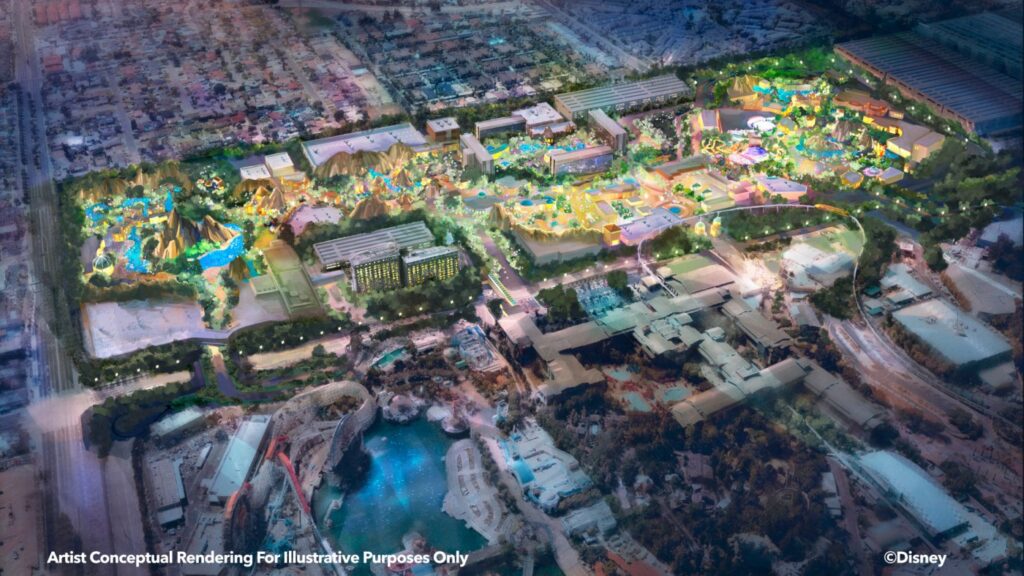
With DisneylandForward having cleared its first legal hurdle, let’s talk about what comes next.
Anaheim’s planning commission has sent the proposal to the Anaheim City Council. The council now must approve the new land-use rules before Disneyland can start building attractions or hotels on its current parking lots. Disneyland likely also will want to have completed its new parking structure east of the parks before closing those lots for development.
So we are a long way from this project being started, much less completed. That said, it is not too early for other businesses and elected officials to begin planning for the effect that Disneyland’s expansion will have upon the community.
More from Robert Niles
Bob Iger’s Avatar plans reveal theme parks’ future
Circus Circus has a winner with its SpongeBob ride — 15 years too late
Knott’s and Six Flags Magic Mountain should be allowed to merge
Super Nintendo World continues Universal’s transformation
Disney and Universal extend their fight beyond the parks
Whether Disneyland uses DisneylandForward to build a third gate on its property or not — and Disneyland has not suggested that it would — the addition of several new themed lands such as Disney has suggested in talking about the proposal represents the functional equivalent of adding a third Disney theme park to its Anaheim property. Disney would not be pursuing DisneylandForward if it did not intend to expand its offerings in the hopes of enticing more visitors to spend more time — and more money — on its property.
So what does that mean for everyone else around the Disneyland Resort? Other communities across the country are investing millions of dollars in new tourist developments just for the opportunity that Anaheim can assure itself with one city council vote — having the equivalent of a new Disney theme park in its community.
My biggest beef with the plans that Disneyland has revealed during its campaign has been the lack of any transportation component beyond the new parking structure. It is in the community’s interest to maximize the number of out-of-town visitors coming to Disneyland without cars. More overnight visitors mean more guest spending and tax revenue, but more cars mean more congestion, more pollution, and more opportunities to drive away from the Anaheim Resort area.
Yet cars are visitors’ only option when the public has no reliable mass transit alternative. Ideally, Disneyland would have a direct rail connection to local airports, like Disneyland Paris has with France’s TGV. That is not in anyone’s plans, so the best alternative would be a frequent, well-publicized, branded and subsidized bus service to the resort area from LAX and SNA.
Related Articles
Disneyland taps local craft beer makers for Disney Food & Wine Festival
DisneylandForward proposal allows 300-foot-tall thematic icons
Disney to invest $30 billion in theme parks over next decade
Disneyland tests automated turnstiles in $4.8 million entrance makeover
Niles: Bob Iger’s Avatar plans reveal theme parks’ future
A subsidy could be well spent if it keeps the prices low enough to undercut car rental rates, enticing visiting families to take the bus and stay in Anaheim rather than renting a car and clogging the streets.
Developing more modern hotels and attractions also would help entice visitors to spend their entire vacation near Disneyland. Motels built in the 20th century do not provide the range of amenities that families who can afford Disneyland want from a vacation destination these days. And no local residents want to be further priced out of the market by more Airbnb conversions. DisneylandForward creates an enormous opportunity for hospitality entrepreneurs in the Anaheim community.
The question is: How will local business and government leaders manage these opportunities?
